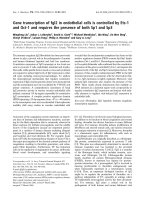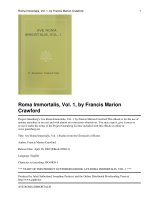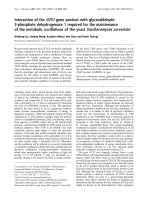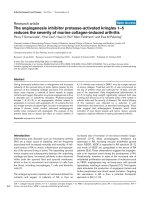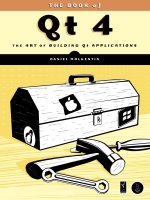1 5 4 the wonder of wheels (nonfiction)
Bạn đang xem bản rút gọn của tài liệu. Xem và tải ngay bản đầy đủ của tài liệu tại đây (37.72 KB, 2 trang )
The Wonder of Wheels
by Mae Lin Chin
Nonfiction
INTRODUCE THE BOOK
RESPOND
Activate Prior Knowledge/Build
Background Read the title, and have children
point to the wheels on the bus. Ask: What do you
play with that has wheels? What are some other
things that have wheels? Tell children this book is
about the ways that wheels help people.
Answers to the Reader’s Inside Back Cover:
Preview/Use Text Features Preview the
reader by talking about the illustrations together
and naming the labeled items.
Preteach Vocabulary Review the highfrequency words that appear in this book:
heavy and goes. Introduce these key words
from the book: wheels (p.1), carry (p. 2),
move (p. 3), and far (p. 6). Discuss these
words and add them to a Word Wall.
READ THE BOOK
Choose among these options for reading to
support children at all English proficiency levels.
Read Aloud Read the book aloud as children
follow along. Pause to verify comprehension and
to explain unfamiliar concepts.
Monitored Reading Have children read
aloud a few pages at a time. Then use questions
such as the following to support comprehension:
• Pages 2–3 Why do these people need a
wagon? (They need a wagon to carry heavy
wood and tools.)
• Pages 4–5 How does a shopping cart help
these people? (The people can carry food
around the store.)
• Pages 6–7 How do these children get to
school? (They ride on a school bus.)
• Page 8 What else can wheels do?
(Possible answers: A steering wheel turns a
car left or right. The wheels on a lawnmower
move it over the grass. At a carnival people
go around and around on a Ferris Wheel or
merry-go-round.)
© Scott Foresman 1
ELL Reader 1.5.4
Reread Have children reread the book with a
partner, in small groups, or independently. Have
them complete the Study Guide on page 56.
ELL Readers Teaching Guide
Talk About It
1. Possible answers: People can move heavy
things with cars, trucks, dollies, wheelbarrows,
trailers, bulldozers, tractors, or pulleys. People
also put wheels under heavy furniture.
2. Possible answers: Rolling backpacks,
suitcases, and baby strollers have wheels and
can help us move things.
Write About It
3. Children may draw something mentioned in
the Talk About It discussion. Brainstorm things with
wheels that help people move around, such as
wheelchairs, bicycles, motor vehicles, and office
chairs. Possible answer: People who can’t walk sit
in a wheelchair. It helps them to move from place
to place.
Support writers at various English proficiency levels.
Beginning Provide these sentence frames:
This is a
. People use it to
. Have
children dictate an ending for each sentence.
Write what they say about their drawing and
then read it to them. Encourage children to
repeat after you.
Intermediate Have children tell a partner
about their wheeled item. Then have them use
the same sentence frames in their writing.
Advanced Have children draw two things
with wheels and tell how people use them.
Extend Language The words walk, what¸
wonder, want, and wood all start with the same
sound. Brainstorm names that start with w, such
as Wilma, Walter, Wanda, William, Wilbur.
Answers to page 56:
Possible drawings:
1 wheel: unicycle, wheelbarrow, Ferris Wheel
2 wheels: bicycle, motorcycle
3 wheels: tricycle, jogging stroller
4 wheels: car, skateboard, wagon, shopping cart
Family Link Read aloud the Family Link activity
on page 56 before sending copies of the Study
Guide home with children. Later, have them
share what things with wheels their families found
at home.
Unit 5, Week 4 The Wonder of Wheels
55
Study Guide
The Wonder
of Wheels
Name
1 wheel
2 wheels
3 wheels
4 wheels
Family Link
Have family members look around the house for things with
wheels. Write or draw at least four things you found.
56
The Wonder of Wheels
Unit 5, Week 4
ELL Readers Teaching Guide
â Scott Foresman 1
ã Read The Wonder of Wheels again.
• What has one wheel? Two wheels? Three wheels?
Four wheels? Draw one of each.

